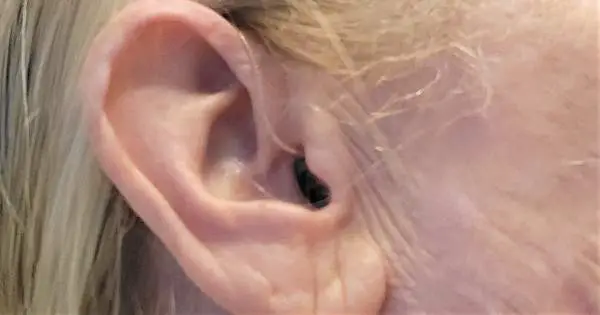Introduction
The journey of parenthood comes with numerous joys, challenges, and questions. One such question may arise when faced with the term ‘sensorineural hearing loss’. If this term has recently come into your life, it is only natural to seek answers. Understanding sensorineural hearing loss is crucial not only for parents of children who are diagnosed with this condition but also for those who wish to stay informed. In this comprehensive guide, we’ll delve into the world of sensorineural hearing loss, what it entails, and how it can affect your child. By the end, you’ll be well-equipped with knowledge and strategies to best support your child on their unique journey.
.
AMZ-Lexie Lumen Self-Fitting OTC Hearing Aids
Experience the Ultimate Sound Quality with Lexie Lumen self-fitting OTC hearing aids. These remarkable devices utilize dual microphones to deliver crystal clear sound, immersing you in a world of auditory excellence. Say goodbye to communication struggles in public spaces or on phone calls, as our Telecoil functionality directs speech directly to your hearing aids via an induction loop system. Rediscover the joy of hearing with unmatched clarity and precision.
Embrace an Active Lifestyle with Lexie Lumen hearing aids. Our cutting-edge sweatproof technology, including Nano coating, safeguards against moisture damage, allowing you to wear your hearing aids during outdoor activities like walks, runs, and open-air events. With Lexie, you can live life to the fullest without compromising on the quality or lifespan of your devices. Don’t let hearing loss hold you back—experience the freedom of superior hearing with Lexie Lumen self-fitting OTC hearing aids.
What Is Sensorineural Hearing Loss? A Basic Overview
Sensorineural hearing loss is a type of hearing loss that occurs due to damage to the inner ear or the nerve pathways from the inner ear to the brain. It is the most common type of permanent hearing loss and usually cannot be medically or surgically corrected.
Hearing is a complex process. It starts when sound waves enter the outer ear and travel through the ear canal, hitting the eardrum. These waves then cause the eardrum to vibrate, and these vibrations are passed on to the tiny bones in the middle ear. These bones amplify the sound vibrations and send them into the inner ear, or cochlea. The cochlea is filled with tiny hair cells that move in response to the vibrations, generating an electrical signal. This signal is then sent via the auditory nerve to the brain, which interprets it as sound.
When there is damage or dysfunction in the inner ear or the auditory nerve, sensorineural hearing loss can occur. This means that the path that sound waves travel to be interpreted as sound is disrupted, causing hearing loss.
Tinnitus: why it’s still such a mystery to science
Sensorineural vs. Conductive Hearing Loss Key Differences
The human auditory system can be affected by different types of hearing loss – sensorineural and conductive. Conductive hearing loss, unlike sensorineural, occurs when there is a problem transferring sound waves anywhere along the pathway through the outer ear, tympanic membrane (eardrum), or middle ear (ossicles). This can be due to blockages, buildup of fluid, or abnormalities of the ear structures.
While both types of hearing loss result in a decreased ability to hear, the causes and treatments for each differ significantly. Conductive hearing loss is often temporary and may be corrected with medical or surgical intervention. On the other hand, sensorineural hearing loss tends to be permanent. Although it can’t be reversed, it can be managed effectively through the use of hearing aids, cochlear implants, and other assistive technologies.
A Deep Dive into the Anatomy of the Ear
Our ability to hear is thanks to the intricate workings of the ear, which can be divided into three main parts: the outer ear, the middle ear, and the inner ear.
The outer ear consists of the pinna (the part of the ear we can see) and the ear canal. Its primary job is to funnel sound waves into the ear canal to the eardrum. The middle ear contains the eardrum and three tiny bones known as ossicles. When sound waves hit the eardrum, they cause it to vibrate. The ossicles amplify these vibrations and carry them to the inner ear.
The inner ear, where sensorineural hearing loss occurs, contains the cochlea and the auditory nerve. The cochlea
is filled with fluid and lined with thousands of tiny hair cells. When sound vibrations reach the cochlea, it causes the fluid to ripple, moving the hair cells. As these hair cells move, they create electrical signals. These signals are then sent to the brain via the auditory nerve.
When damage occurs in the inner ear or along the auditory nerve—such as from aging, loud noise exposure, or certain medications—sensorineural hearing loss can result. This is because the transmission of sound signals from the cochlea to the brain is disrupted.
Causes of Sensorineural Hearing Loss From Genetics to Noise
There are many causes of sensorineural hearing loss, with the most common being aging. As we age, the hair cells in our cochlea naturally deteriorate and lose their ability to send signals to the brain, leading to age-related sensorineural hearing loss.
Sensorineural hearing loss can also be caused by prolonged exposure to loud noises. Loud noises can damage or destroy the hair cells in the cochlea. Unlike some cells in the body, these hair cells do not regenerate, so any damage is permanent. For instance, constant exposure to loud music or working in a noisy environment like a construction site can increase the risk of sensorineural hearing loss.
Genetic factors can also play a role in sensorineural hearing loss. Certain genetic mutations can make a person more susceptible to hearing loss. An example is the Connexin 26 gene mutation, which is one of the most common genetic causes of non-syndromic hearing loss.
Diseases such as Meniere’s disease or autoimmune diseases can also result in sensorineural hearing loss. In addition, certain medications, known as ototoxic drugs, can damage the inner ear and cause sensorineural hearing loss. Some chemotherapy drugs, aminoglycoside antibiotics, and large quantities of aspirin are examples of ototoxic drugs.
Sensorineural Hearing Loss Symptoms to Look Out For
Identifying the symptoms of sensorineural hearing loss can help ensure early intervention, which is crucial for managing the condition. Sensorineural hearing loss can manifest in several ways.
Your child might have trouble hearing quiet sounds or understanding speech, especially when there’s background noise. They might frequently ask others to repeat themselves or turn up the volume on the TV or radio. Certain sounds might seem too loud or distorted, and they may have difficulty telling high-pitched sounds (like “s” or “th”) from one another.
Children with sensorineural hearing loss might also show changes in their academic performance or behavior. They might appear inattentive or have trouble following directions. This is because they are straining to hear, which can be exhausting and can affect their focus and behavior.
Deafness: A Journey of Challenges and Triumphs
Sensorineural Hearing Loss Symptoms to Look Out For
Identifying the symptoms of sensorineural hearing loss can help ensure early intervention, which is crucial for managing the condition. Sensorineural hearing loss can manifest in several ways.
Your child might have trouble hearing quiet sounds or understanding speech, especially when there’s background noise. They might frequently ask others to repeat themselves or turn up the volume on the TV or radio. Certain sounds might seem too loud or distorted, and they may have difficulty telling high-pitched sounds (like “s” or “th”) from one another.
Children with sensorineural hearing loss might also show changes in their academic performance or behavior. They might appear inattentive or have trouble following directions. This is because they are straining to hear, which can be exhausting and can affect their focus and behavior.
CAUSES OF HEARING LOSS
Diagnosing Sensorineural Hearing Loss What Does the Process Look Like?
When sensorineural hearing loss is suspected, a visit to a healthcare provider or audiologist is the first step. They will likely start by asking about the person’s medical history and conducting a physical examination. This examination can rule out any problems in the outer or middle ear, like a buildup of wax or fluid, which could be causing temporary hearing loss.
Next, a series of hearing tests may be conducted. These tests can determine the type and degree of hearing loss. One common test is the pure-tone audiometry test, where the person listens to a range of sounds at different tones and volumes. This test can help determine the quietest sound a person can hear at different frequencies.
In some cases, additional tests may be needed to identify the exact cause of the hearing loss. These might include imaging tests like a CT or MRI scan, which can provide detailed images of the inner ear and auditory nerve.
Remember, early diagnosis of sensorineural hearing loss is crucial. It allows for early intervention, which can significantly improve the child’s ability to communicate and their overall quality of life.
Conclusion
Understanding sensorineural hearing loss can be a challenging endeavor for any parent, but remember that you’re not alone. With the insights from this guide, you’re now equipped to navigate this journey with knowledge and confidence.
We have explored the intricate anatomy of the ear and the journey sound waves take to reach our brain. We’ve delved into the causes of sensorineural hearing loss, from age and loud noises to genetics and certain medications. We also discussed the symptoms to watch out for, which can range from difficulty hearing quiet sounds to changes in academic performance or behavior.
Remember, early detection is key in managing sensorineural hearing loss. If your child exhibits any of the symptoms mentioned, don’t hesitate to seek professional advice. There are many resources and technologies available to help children with hearing loss live a fulfilling and successful life.
In this age of constant information flow, it’s crucial to stay informed, especially when it concerns the well-being of our children. By understanding sensorineural hearing loss, we can better advocate for them and ensure they receive the necessary care and support.






